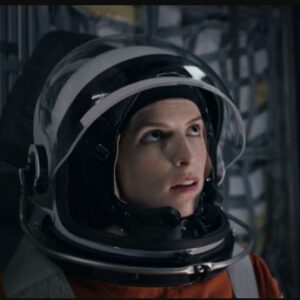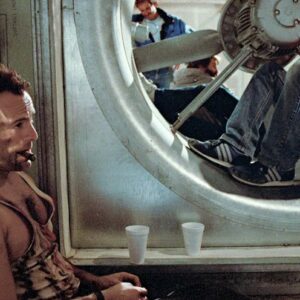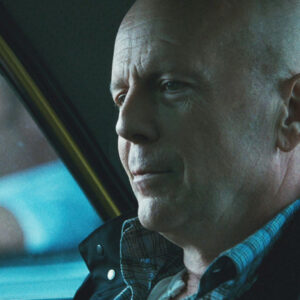In the world of Hollywood, where fame can seem like a game of chance, Dakota Johnson’s rise to stardom stands as a testament to the power of resilience and perseverance. Best known for her iconic portrayal of Anastasia Steele in the Fifty Shades of Grey trilogy, Dakota is now a household name, gracing red carpets and receiving accolades for her versatile performances. But behind her success lies a story not of immediate triumph, but one of struggle, rejection, and the unyielding pursuit of a dream. Her journey, filled with setbacks, serves as a powerful reminder that rejection, though painful, is often an essential part of an actor’s path to greatness.
Early Struggles and Audition Rejections
Dakota Johnson’s entry into the entertainment industry was almost preordained. Born into a family of high-profile actors, including her mother Melanie Griffith and father Don Johnson, Dakota was exposed to the glitz and glamour of Hollywood from a young age. But despite her pedigree, her early years in the industry were anything but smooth sailing.
Like many young actors, Dakota faced numerous hurdles as she attempted to carve out a space for herself. In the beginning, talent alone wasn’t enough. She found herself repeatedly rejected for roles, even though she came from a family of well-known actors. Dakota was determined to make it on her own terms, not relying solely on her family name but proving herself capable of taking on complex, engaging characters.
One of the first notable rejections came when Dakota auditioned for the role of Bella Swan in Twilight, a part that ultimately went to Kristen Stewart. While Twilight would go on to become a cultural phenomenon, Dakota’s rejection didn’t define her. It was simply a stepping stone on her path. She faced similar disappointments in auditions for other high-profile roles, none of which seemed to lead to the kind of breakout role she was seeking. In these early years, Dakota’s career was marked by a series of setbacks that tested her patience, her ambition, and her self-belief.
For many aspiring actors, the pressure to succeed is immense, especially when one comes from a family as famous as Dakota’s. However, it’s clear that even with her family’s legacy, Dakota had to prove herself worthy of success in her own right. The reality of auditioning is often a humbling experience, even for those who have the talent to make it. Her story highlights an important truth in the entertainment industry: there’s no direct path to stardom, and talent alone is never enough.
Auditioning for Big Roles
As the years went on, Dakota Johnson continued to audition for major films, always determined to find a role that would allow her to demonstrate her range. However, the casting process often felt like an exercise in rejection. She auditioned for a variety of films, some of which had the potential to launch her career into the stratosphere. In addition to Twilight, Dakota also sought roles in big-budget films like The Social Network and The Amazing Spider-Man. In these instances, she was not chosen, but the rejections were never personal; they were simply a part of the brutal nature of the industry.
It is easy to imagine how difficult it must have been for Dakota, who by all accounts is a talented and dedicated performer, to face such continuous rejection. With each failed audition, there would have been the temptation to doubt her abilities, to question whether she was cut out for the competitive world of acting. But rather than giving in to discouragement, Dakota chose to remain focused on the long-term goal. She kept learning, honing her craft, and gaining experience with each audition.
Rejection is one of the most difficult aspects of an actor’s life, and it’s no different for Dakota. The process of auditioning for big roles and then facing rejection can feel like a series of brutal blows. It’s a painful reminder that, in this industry, success isn’t guaranteed by talent or connections alone. It’s also about timing, chemistry with the director and cast, and, at times, sheer luck. But despite the letdowns, Dakota never gave up. Her ability to keep moving forward after each rejection would become one of her most defining traits as an actress.
Handling Rejection and Learning from It
At its core, rejection is a form of feedback, albeit a painful one. For Dakota, learning to cope with these rejections became an essential part of her growth as an artist. Rather than allowing each “no” to chip away at her confidence, she used those experiences to improve, to develop a more nuanced approach to her craft, and to refine her understanding of the business.
Dakota often speaks about how the rejections she faced early on helped her grow not just as an actress, but as a person. In interviews, she has shared that she learned to trust the process, to believe that everything happens for a reason—even when the immediate results aren’t what she had hoped for. This mindset allowed her to focus on the bigger picture: building a career, not just landing the next role. She began to see the challenges as learning opportunities, shaping her into a more grounded and skilled actress.
Her experience of rejection led her to make more thoughtful choices about the roles she would pursue. Instead of chasing after every opportunity, Dakota became more discerning about the types of characters she wanted to portray. This approach allowed her to align herself with projects that resonated with her on a deeper level, rather than simply taking whatever came her way. In hindsight, many of these early rejections may have been blessings in disguise—paving the way for a more fulfilling career trajectory.
One of the key aspects of Dakota’s personal growth was her ability to manage her emotions throughout the rejection process. By learning how to separate herself from the outcomes of her auditions, she could focus on improving her performances rather than dwelling on the setbacks. Her attitude reflects the resilience that is so important in an actor’s career—particularly in an industry where rejection is an inevitable part of the journey.
Turning Rejection Into Motivation
Rather than becoming disillusioned by her rejections, Dakota Johnson used them as fuel to drive her forward. Instead of succumbing to self-doubt, she transformed the frustration of not landing roles into motivation to push harder and become better. The rejections, she has said, gave her the courage to be more selective with the roles she pursued. They allowed her to step back and think about what kind of artist she wanted to be.
This shift in perspective proved to be crucial. Rather than scrambling for every role, Dakota became more focused on finding characters that challenged her and allowed her to showcase her range as an actress. Her journey of self-discovery, through both success and failure, became a process of refining her craft. By the time she auditioned for Fifty Shades of Grey, she was in a stronger position—mentally, emotionally, and artistically—to embrace the role and the challenges it would bring.
For aspiring actors, Dakota’s story is a powerful reminder of the importance of persistence. Rejection, though painful, is a necessary part of the journey toward success. It teaches valuable lessons about resilience, self-improvement, and the importance of trusting the process. Through each failure, Dakota learned to grow stronger, more capable, and more focused on her ultimate goal: to become the kind of actress who can bring complex, multidimensional characters to life on screen.
Conclusion – Rejection is Part of the Journey
Dakota Johnson’s career, like the careers of many successful actors, is built on the foundation of rejection. Her journey from auditions filled with “no’s” to landing the role that would define her career in Fifty Shades of Grey is a testament to the power of perseverance and self-belief. For every actor, rejection is a rite of passage—a moment that tests resolve, challenges growth, and ultimately shapes success. Dakota’s ability to turn rejection into motivation, to trust the process, and to use each setback as a learning opportunity has made her a more grounded and skilled actress.
For anyone aspiring to make it in the competitive world of acting, Dakota Johnson’s story is one of hope. It shows that rejection is not the end of the road, but simply one step on a long, often unpredictable journey toward success. With hard work, resilience, and a willingness to learn from each experience, dreams of stardom can become a reality—even when the path is filled with bumps and detours. In the end, it’s not the rejections that define us—it’s how we respond to them that determines our ultimate success.





